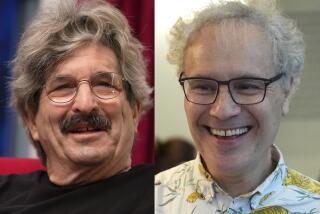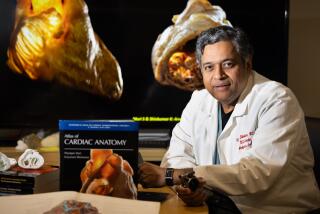A $1-million prize for monitoring the progression of ALS, or Lou Gehrig’s disease
- Share via
A Boston researcher will receive a $1-million prize from the Prize4Life foundation’s ALS Biomarker Challenge, an effort to develop new ways to monitor the progression of amyotrophic lateral sclerosis to make it easier to test potential drugs for the disease. The prize is believed to be the biggest-ever challenge award related to a medical condition, but Prize4Life estimates it could halve the cost of clinical trials for new ALS drugs. Dr. Seward Rutkove of Beth Israel Deaconess Medical Center will receive the award formally in June.
ALS, also called Lou Gehrig’s disease, is a rapidly progressive, invariably fatal neuromuscular disease that affects an estimated 20,000 to 30,000 people in the United States, with an additional 5,000 being stricken each year. Most victims die within two to five years and there is no cure. There is currently only one approved drug, riluzole, which extends survival by an average of about three months. Currently, the only way to test potential new drugs for benefit is to determine their effect on survival, a lengthy and expensive process. To accelerate that process, Prize4Life issued a challenge in 2006 looking for an alternative way to measure progression of the disease.
Rutkove, a neurologist, observed that as muscles deteriorated in ALS patients, they produced an increased resistance to the passage of small electrical currents, a process called electrical impedance. Rutkove and his colleagues developed a technique to measure this change, called electrical impedance myography, or EIM, and created a handheld device that can be used with virtually any muscle in the body, even the tongue. Tests in animals showed that changes in impedance could be correlated with progression of disease.
Rutkove helped co-found Convergence Medical Devices in Woburn, Mass., to manufacture the device and clinical trials in humans are expected to begin later this year. The device would be placed over a muscle or group of muscles, where it would deliver an imperceptible current. After about 10 seconds, it would provide the physician or researcher a score that would reflect the status of the muscle. Repeated measurements over time would chart the progression of the disease.
Prize4Life hopes the availability of a better way to monitor progression of the disease will lure more companies into the search for new drugs for ALS, said the group’s chief scientific officer, Melanie Leitner.






